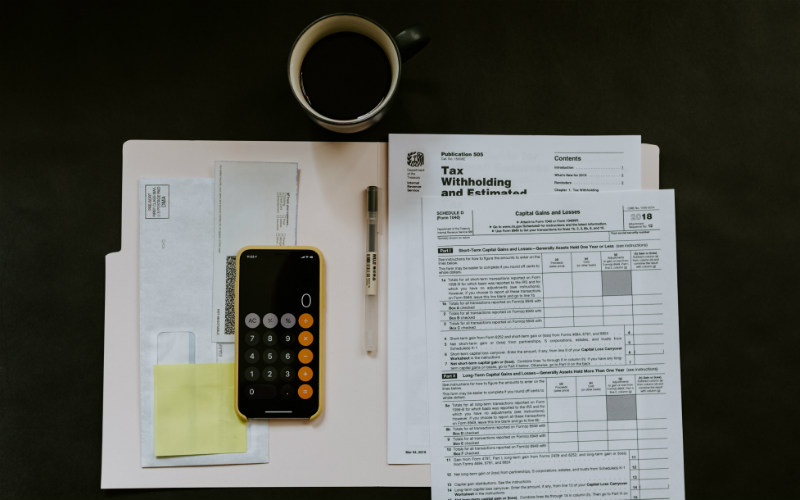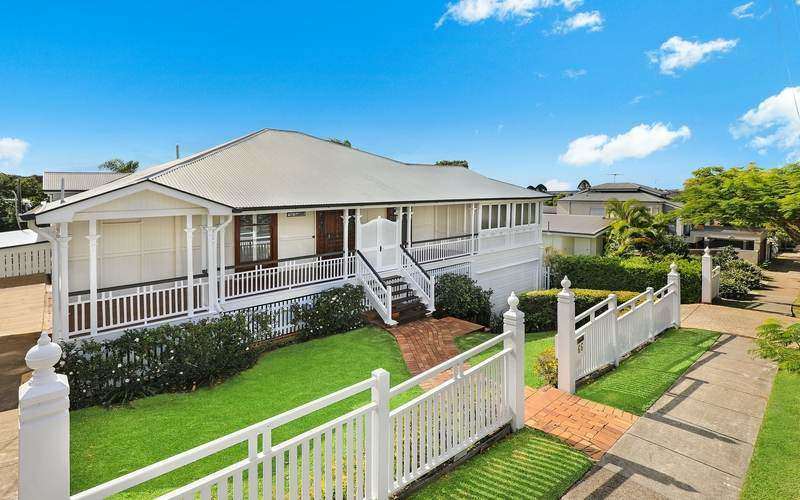Whether you are buying or selling, it’s a good idea to have an accurate property valuation. But it pays to remember valuations of a property can be quite different to the price someone is willing to pay for it.
As at July 2024, the median residential property price in Australia has skyrocketed by more than 40% since the start of the pandemic, according to PropTrack. This has seen many potential buyers outpaced by the market with some perhaps feeling compelled to pay over the odds to secure a property, thus spurring property values even higher.
But what is a property really worth? There are valuation professionals who will give you a definitive figure and then there are real estate experts who may have a different estimate.
Let’s check what an official property valuation entails, how to get one, and why they’re needed.
Lender valuation
A lender valuation is the price a bank or non-bank lender values a property at. A formal property valuation will be part of the loan application process. It will consider things like the land, the condition of the dwelling itself, the neighbourhood, access to amenities, demand for the area, and many other factors.
What the valuation comes in at and what you pay for a property are unlikely to be the same. Typically, lender valuations tend to be considerably lower than market prices. This is because licensed valuers are trained to be objective, inherently conservative, and only consider the condition of the property at the time they value it, not how good it might be in the future, as potential buyers tend to do.
Why does this matter?
Lenders use formal valuations to assess the risk of lending to prospective buyers. They are particularly important in calculating loan-to-value ratio (LVR). A loan-to-value ratio is the value of a property compared to the amount of money being borrowed for it through a home loan. LVR is calculated as a percentage and is used by lenders to assess the risk of accepting your loan application. The lower the LVR, the lower the risk that loan is likely to be to a potential lender.
Keeping track of your LVR when house hunting is important as it gives you some indication of your borrowing power. A low LVR can also help you avoid certain home loan fees, particularly Lenders Mortgage Insurance (LMI), and also give you access to a more competitive interest rate. Most lenders will not charge LMI on loans with an LVR of 80% or less - a 20% deposit - though some lenders may offer no-LMI loans to borrowers who have a 15% deposit.
How much is a lender valuation?
When you purchase a home, banks and non-bank lenders will conduct their own valuation on a property. Many lenders will pass on the cost in their fees - generally somewhere between $300-$600 - while others may waive the cost as an enticement to add you to their lending book.
You can check the cost for your lender’s valuation by looking at the breakdown of the establishment fees of the home loan you are applying for.
How do valuations differ from market appraisals?
It’s worth noting here that valuations provide a legal value arrived at by a trained and licensed valuer after they have closely inspected the property according to a formal process. Property valuations cost money and are considered an official measure of a property’s worth.
Market appraisals can give you an indication of price based on the opinion of real estate agents from their knowledge of the area, similar properties, and recent sales. They are usually free but may come with inherent bias based on the motivations of an agent. Market appraisals have no legal standing.
Other types of valuations include those you may see on real estate websites. They are often generated by algorithms that assess the property’s value based on the site’s data including recent sales in the area, the address, and general property description. The types of valuations offer a ballpark estimation that, again, will likely bear little correlation to an official valuation.
What if the lender valuation and purchase price aren't the same?
It’s not unusual for a lender to value the property at a lower price than what the house is selling for. This is called a valuation shortfall, and it essentially means your lender may not be willing to lend you the money you originally applied for.
In effect, it means you might need to come up with more of your own money or keep shopping around for either another home or another lender.
However, your loan could still go ahead, but if the shortfall pushes your LVR higher than 80%, you’ll likely need to pay LMI. For example, if the purchase price is $600,000 and you’ve applied for a $420,000 loan, the loan-to-value ratio comes in at 70%. But if the lender values the home at $500,000, the new LVR is 84%, pushing your purchase above the threshold for avoiding LMI.
Also read: How much is your home worth?
What influences a home’s value?
Land value
This takes into account the size of the block of land, local council zoning, any planning or environmental restrictions, ease of access, geographical topography, its aspect, and general layout.
Location
Location is a key denominator in any property equation. A house and land, close to a capital city, with access to public transport, good schools, and amenities like cafes and restaurants, will likely be worth more than the same size house and land in a remote town.
If you are looking at buying, researching the suburb is the best way to understand the value of homes there. A desirable location - for example, one with a view or close to water - will make a property more valuable than a comparable home in the same locale without those attributes.
Demand
Australia’s population growth has been a key driver of property prices in many parts of Australia. In economic terms, supply and demand will always influence the value of an asset, and property is no different.
As an example, during the pandemic, many coastal towns saw property values skyrocket as people sought to leave capital cities for seachange destinations. The price spike was driven by the low supply of properties coming onto the market while many potential buyers were looking to buy.
Conversely, if there is a lack of buyer demand in an area or too many homes on the market, property values may remain stagnant or decrease.
Property condition
The physical structure of a property is also key to its value. A valuer will assess its age, the materials it is made from, its state of repair, and the standard of its fixtures and fittings. The same goes for features like pools, gardens, decks, or fences.
Size and layout
The number and types of rooms will have a bearing on an official valuation. A valuer will consider a property’s layout and architectural style as well as the number of bedrooms, bathrooms, and living spaces.
How to increase your property’s value?
If you’re a seller, there’s not too much you can do about the land and the location of your property. However, there are a number of things you can do to your home to boost its value and some of them are not that difficult. They include:
-
adding a bedroom, bathroom, or additional living space, including a granny flat
-
adding an outdoor area such as a deck or patio area that provides additional living space and is cheaper than adding a room
-
upgrade fixtures and fittings
-
basic repairs and maintenance, and cosmetic changes such as a paintjob
-
tidy the gardens
-
make it neat and presentable
Savings.com.au’s two cents
A formal property valuation is a standard part of being approved for a home loan. A home’s value in legal terms may or may not bear any resemblance to its advertised price or the price you are willing to pay for it. Lenders will generally organise an in-person independent valuation that loan applicants usually pay for as part of their application fee.
Professional property valuations are used to determine your loan-to-value ratio (LVR) and will impact the amount of money the bank is willing to lend you and even the interest rate you will be offered. Be prepared for an official valuation to come in lower than what you may be paying for a home. Keep in mind, formal valuations take into account many factors and can be notoriously conservative.
If you're buying a home or looking to refinance, the table below features home loans with some of the lowest interest rates on the market for owner occupiers.
| Lender | Home Loan | Interest Rate | Comparison Rate* | Monthly Repayment | Repayment type | Rate Type | Offset | Redraw | Ongoing Fees | Upfront Fees | Max LVR | Lump Sum Repayment | Extra Repayments | Split Loan Option | Tags | Features | Link | Compare | Promoted Product | Disclosure |
|---|---|---|---|---|---|---|---|---|---|---|---|---|---|---|---|---|---|---|---|---|
5.54% p.a. | 5.58% p.a. | $2,852 | Principal & Interest | Variable | $0 | $530 | 90% |
| Promoted | Disclosure | ||||||||||
5.49% p.a. | 5.40% p.a. | $2,836 | Principal & Interest | Variable | $0 | $0 | 80% |
| Promoted | Disclosure | ||||||||||
5.64% p.a. | 5.89% p.a. | $2,883 | Principal & Interest | Variable | $250 | $250 | 60% |
| ||||||||||||
5.64% p.a. | 5.89% p.a. | $2,883 | Principal & Interest | Variable | $248 | $350 | 60% |
|
Image by Leslie Low via Unsplash

Ready, Set, Buy!
Learn everything you need to know about buying property – from choosing the right property and home loan, to the purchasing process, tips to save money and more!
With bonus Q&A sheet and Crossword!







 Harry O'Sullivan
Harry O'Sullivan

 Denise Raward
Denise Raward
 Alex Brewster
Alex Brewster
 William Jolly
William Jolly

